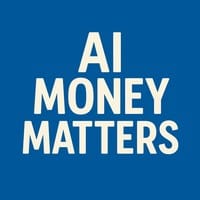Securing Your Financial Future with Retirement Planning
To achieve a secure financial future, it’s essential to develop a comprehensive retirement plan tailored to your needs. A well-structured plan helps ensure that you have enough resources to maintain your desired lifestyle after leaving the workforce.
A professional retirement planner can guide you through complex financial decisions, optimize your savings strategy, and create a personalized roadmap for retirement success. Understanding the fundamentals of retirement planning early on can significantly impact your financial security in later years.
Modern retirement planning incorporates various tools and calculators that can help you estimate your needs, track your progress, and make adjustments as necessary. This guide will walk you through the essential components of retirement planning, from savings strategies to Social Security optimization, helping you build a comprehensive plan tailored to your unique goals and circumstances.
By working with a retirement planner, you can identify the most effective ways to help you reach your goals. Whether it’s optimizing your retirement plan or utilizing a virtual assistant for ongoing support, a professional can provide the guidance you need.
Understanding the Fundamentals of Retirement Planning

To achieve a comfortable retirement, it’s vital to grasp the fundamentals of retirement planning. This involves understanding several key elements that form the foundation of a successful retirement strategy.
Key Components of a Successful Retirement Plan
A successful retirement plan requires consideration of several critical factors, including income sources, expense projections, investment strategies, and risk management. These components work together to ensure that your retirement savings are sufficient to support your lifestyle.
When to Start Planning for Retirement
Starting your retirement planning early provides significant advantages through compound growth, allowing even modest savings to grow substantially over time. It’s essential to establish clear financial goals and create a realistic timeline for achieving them.
| Age | Investment Strategy | Risk Level |
|---|---|---|
| 20-30 | Aggressive Growth | High |
| 40-50 | Balanced | Moderate |
| 60+ | Conservative | Low |
As you near retirement, your investment strategy should evolve to manage risk and ensure that your savings last throughout your retirement years. Investing involves risk, including risk of loss, and it’s crucial to balance risk and reward according to your age and circumstances.
Working with a Professional Retirement Planner

Navigating the complexities of retirement planning requires expert guidance, making a professional retirement planner an invaluable resource. A qualified retirement planning professional can provide objective advice tailored to your specific financial situation, goals, and risk tolerance.
Benefits of Professional Guidance
Professional retirement planners bring specialized expertise to help navigate complex financial decisions and optimize your retirement strategy. They can help identify potential gaps in your retirement strategy and recommend appropriate adjustments to keep you on track.
What to Look for in a Retirement Planning Service
When selecting a retirement planning service, look for credentials such as Certified Financial Planner (CFP) or Chartered Financial Consultant (ChFC) designations. The right retirement planner should offer comprehensive services including investment management, tax planning, estate planning, and healthcare cost projections.
Consider whether you prefer a fee-only planner who doesn’t earn commissions or a full-service brokerage that might offer additional resources and tools. For instance, Fidelity advisors are licensed with Strategic Advisers LLC, a registered investment adviser, and registered with Fidelity Brokerage Services LLC (FBS), a registered broker-dealer.
Essential Retirement Planning Tools and Calculators

Retirement planning tools and calculators are essential for making informed decisions about your financial strategy. These resources help you visualize your financial future and identify potential shortfalls before they become problems.
Retirement Income Calculators
Retirement income calculators help you estimate how much monthly income your savings will generate. This allows you to adjust your savings rate or investment strategy accordingly.
Social Security Benefit Estimators
Social Security benefit estimators enable you to compare different claiming strategies and understand how your claiming age impacts your lifetime benefits. You can maximize your Social Security benefits by using these estimators to find the optimal claiming age.
Health Care Cost Planning Tools
Healthcare cost planning tools are crucial for estimating one of retirement’s largest and most unpredictable expenses. They help you prepare for Medicare costs and potential long-term care needs, ensuring that you’re not caught off guard by healthcare expenses in retirement.
By utilizing these retirement planning tools and calculators, you can create a more comprehensive retirement plan that addresses various aspects of your financial future.
Building Your Retirement Savings Strategy

Creating an effective retirement savings plan involves understanding different account types and their benefits. A comprehensive strategy can help you maximize your savings and achieve your retirement goals.
To build a robust retirement savings strategy, it’s essential to understand the various account types available, including Traditional and Roth IRAs, as well as 401(k) and other employer-sponsored plans. Each of these accounts has its unique tax advantages and contribution limits.
Traditional and Roth IRA Options
Traditional IRAs offer tax-deferred growth, meaning you won’t pay taxes on the investment gains until you withdraw the funds in retirement. You may also be eligible for tax deductions on your contributions. In contrast, Roth IRAs provide tax-free withdrawals in retirement, but you’ve already paid taxes on the contributions. For more information on IRA options, you can visit top IRA accounts for beginners.
| Account Type | Tax Benefits | Contribution Limits |
|---|---|---|
| Traditional IRA | Tax-deferred growth, potential tax deductions | $6,000 ($7,000 if 50+) |
| Roth IRA | Tax-free withdrawals | $6,000 ($7,000 if 50+) |
401(k) and Employer-Sponsored Plans
Employer-sponsored plans like 401(k)s often include matching contributions, which can significantly accelerate your retirement savings. These plans may also offer higher contribution limits compared to IRAs. Understanding the rules for penalty-free withdrawals from these accounts can help you access funds if needed before retirement age.
A diversified retirement savings approach often combines multiple account types to maximize tax advantages and create flexibility for future withdrawals. Regular reviews of your retirement savings strategy are essential to ensure it remains aligned with your changing financial situation and goals.
Maximizing Social Security Benefits

To optimize your retirement income, it’s essential to make informed decisions about when to start receiving Social Security benefits. The timing of your claim can significantly affect your retirement payments, making it a crucial aspect of your overall retirement plan.
Optimal Claiming Age Strategies
The age at which you claim Social Security benefits can greatly impact the amount you receive. You can start receiving benefits as early as age 62, but waiting until your full retirement age or even later can increase your payments. For each year you delay claiming between your full retirement age and age 70, your benefits increase by approximately 8%. For more detailed information on maximizing your benefits, you can visit Bessemer Trust’s insights on the topic.
Spousal and Survivor Benefits
For married couples, coordinating Social Security benefits can be complex but beneficial. Spousal benefits allow a lower-earning spouse to receive up to 50% of their partner’s benefit amount, while survivor benefits provide crucial protection for widows and widowers, allowing them to receive up to 100% of their deceased spouse’s benefit. Understanding these benefits is key to helping create a comprehensive retirement plan.
Tax-Efficient Retirement Planning
A well-structured tax plan can make a substantial difference in your retirement finances. Effective tax planning is crucial for maximizing your retirement income and ensuring that you are not unnecessarily burdened by taxes.
Different retirement accounts have varying tax treatments. For instance, traditional accounts offer tax-deferred growth with taxable withdrawals, while Roth accounts provide tax-free withdrawals after tax-paid contributions. Understanding these differences is key to tax-efficient retirement planning.
Tax Considerations for Different Retirement Accounts
When planning for retirement, it’s essential to consider the tax implications of your retirement accounts. Traditional IRA and 401(k) accounts are tax-deferred, meaning you pay taxes when you withdraw the funds. In contrast, Roth IRA accounts are funded with after-tax dollars, so withdrawals are tax-free.
- Tax-deferred growth with traditional accounts
- Tax-free withdrawals with Roth accounts
Roth Conversion Strategies
Roth conversion strategies can be particularly valuable during lower-income years or periods of market downturns, allowing you to pay taxes at potentially lower rates. It’s essential to consult with a tax professional to determine the best strategy for your situation. For more information on planning your retirement, you can visit this resource.
Fidelity does not provide legal or tax advice. The information herein is general and educational in nature and should not be considered legal or tax advice. Consult an attorney or tax professional regarding your specific situation.
By understanding the tax implications of your retirement accounts and employing strategies like Roth conversions, you can create a more tax-efficient retirement plan. This can help maximize your spendable income in retirement and ensure a more sustainable financial future.
Healthcare Planning for Retirement

Planning for healthcare in retirement is essential to ensure financial security. Healthcare costs represent one of the largest and most unpredictable expenses in retirement, making comprehensive planning crucial.
Understanding your healthcare options is vital, especially when it comes to Medicare Coverage Options. Medicare becomes available at age 65, but understanding its various parts (A, B, C, and D) and supplemental coverage options is crucial for managing healthcare costs.
Medicare Coverage Options
For those not yet eligible for Medicare, it’s essential to explore health care options and potential costs. Tools like the Health Insurance Before Medicare Planner can help estimate expenses.
Early retirees need specific strategies to bridge the gap until Medicare eligibility, including COBRA, ACA marketplace plans, or spouse’s employer coverage.
Long-Term Care Considerations
Long-term care represents a significant financial risk, with costs potentially exceeding $100,000 annually for nursing home care in many areas. Evaluating long-term care insurance, hybrid life insurance policies, and self-funding strategies is crucial.
For more information on managing long-term care risks, visit Explore Long-Term Care Insurance Options. Health Savings Accounts (HSAs) offer triple tax advantages and can serve as powerful retirement healthcare funding vehicles when used strategically.
Using tools like the HSA Calculator can help estimate healthcare expenses and how an HSA could help. Healthcare planning should be integrated with your overall retirement strategy, as healthcare costs can significantly impact your retirement income needs and withdrawal strategy.
Conclusion: Creating Your Personalized Retirement Roadmap
To ensure a comfortable retirement, develop a comprehensive retirement plan addressing your unique needs. Regular reviews are crucial as life circumstances and financial markets change. Consider working with professionals like Fidelity Brokerage Services for guidance. A successful plan balances current needs with future security.

